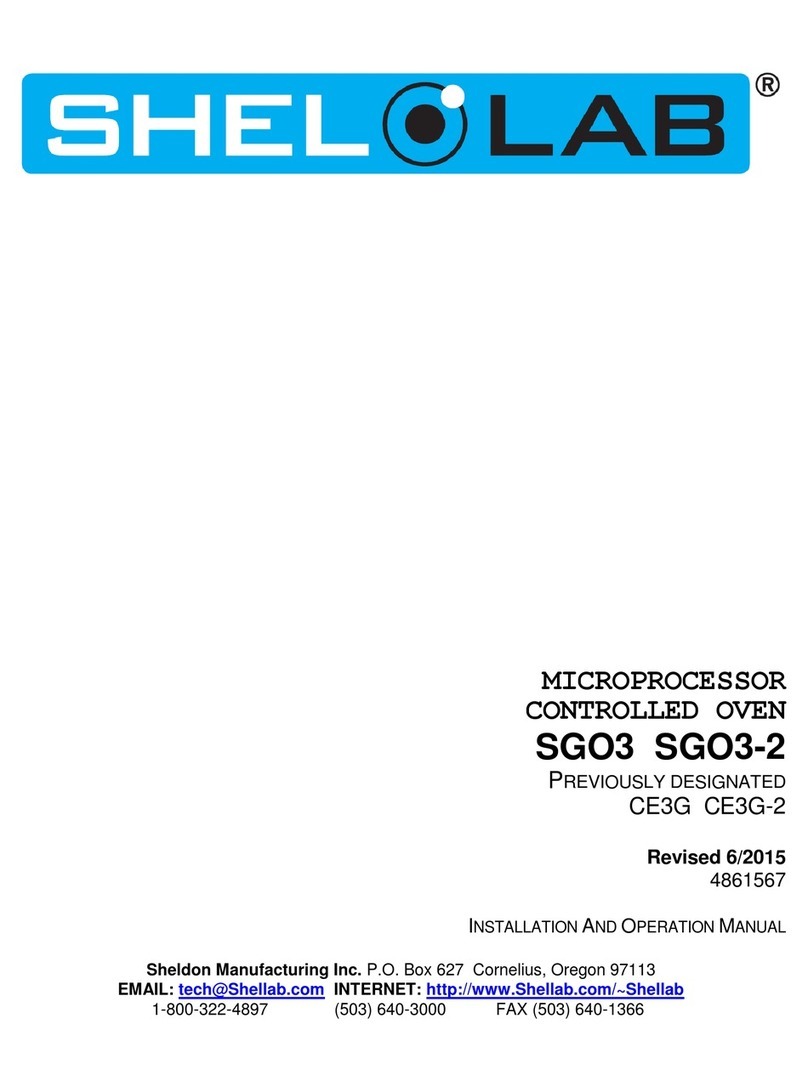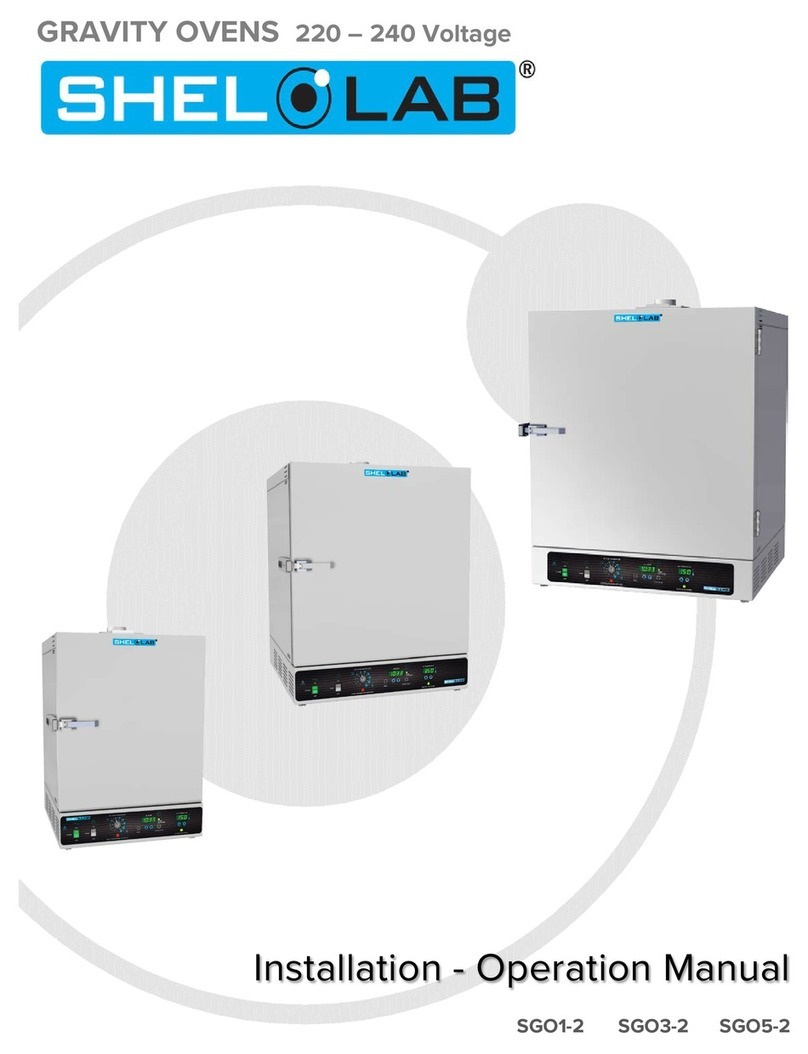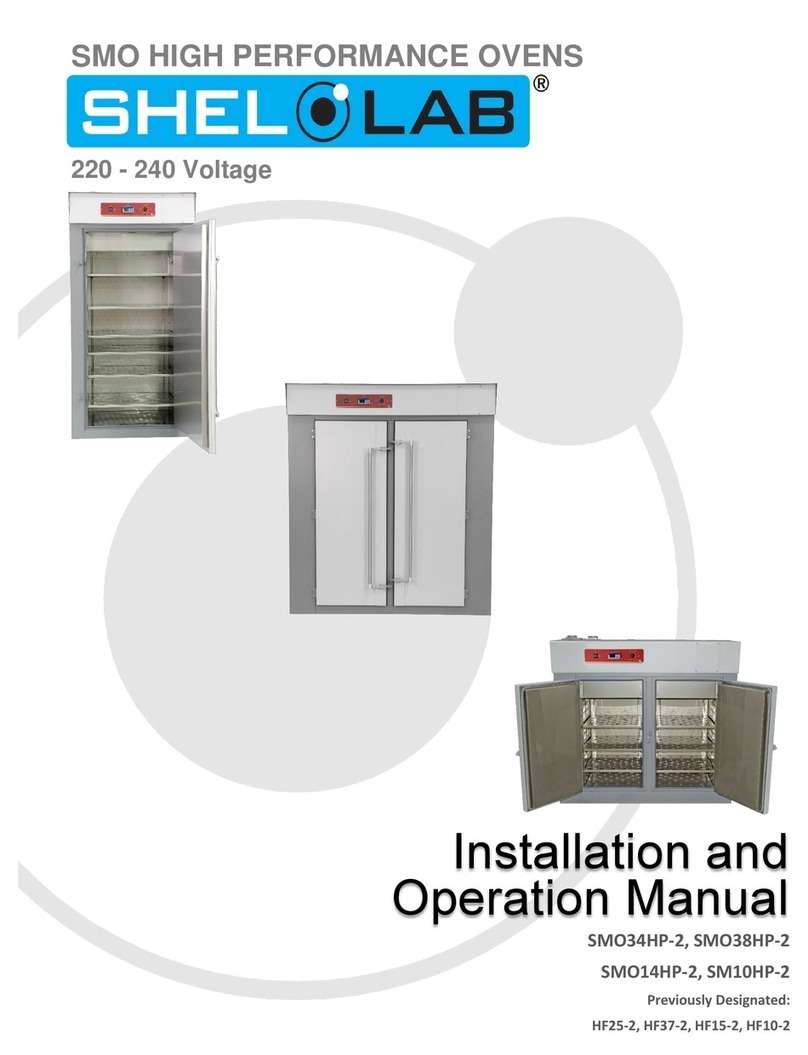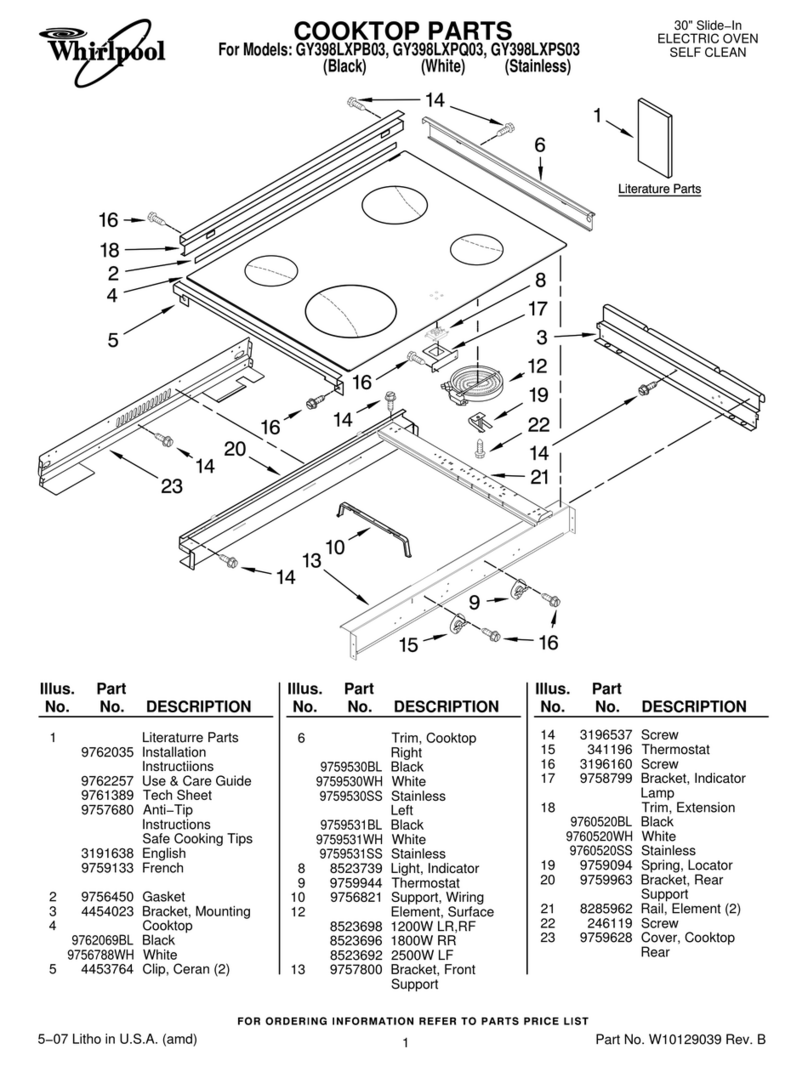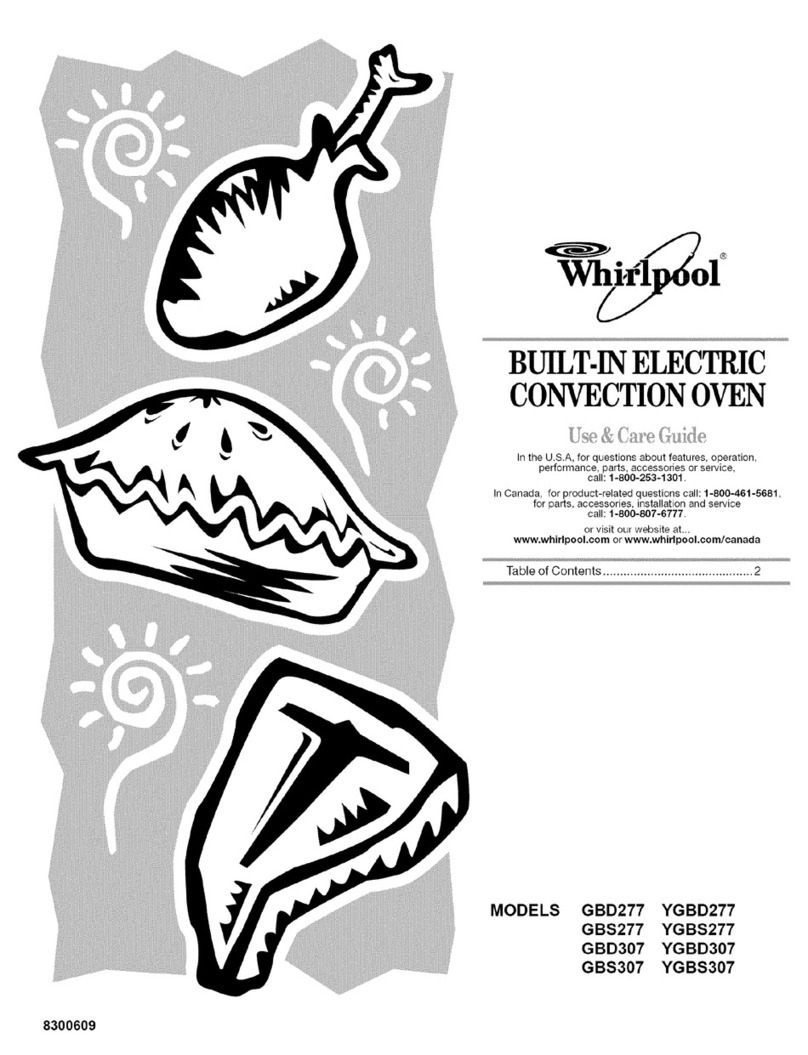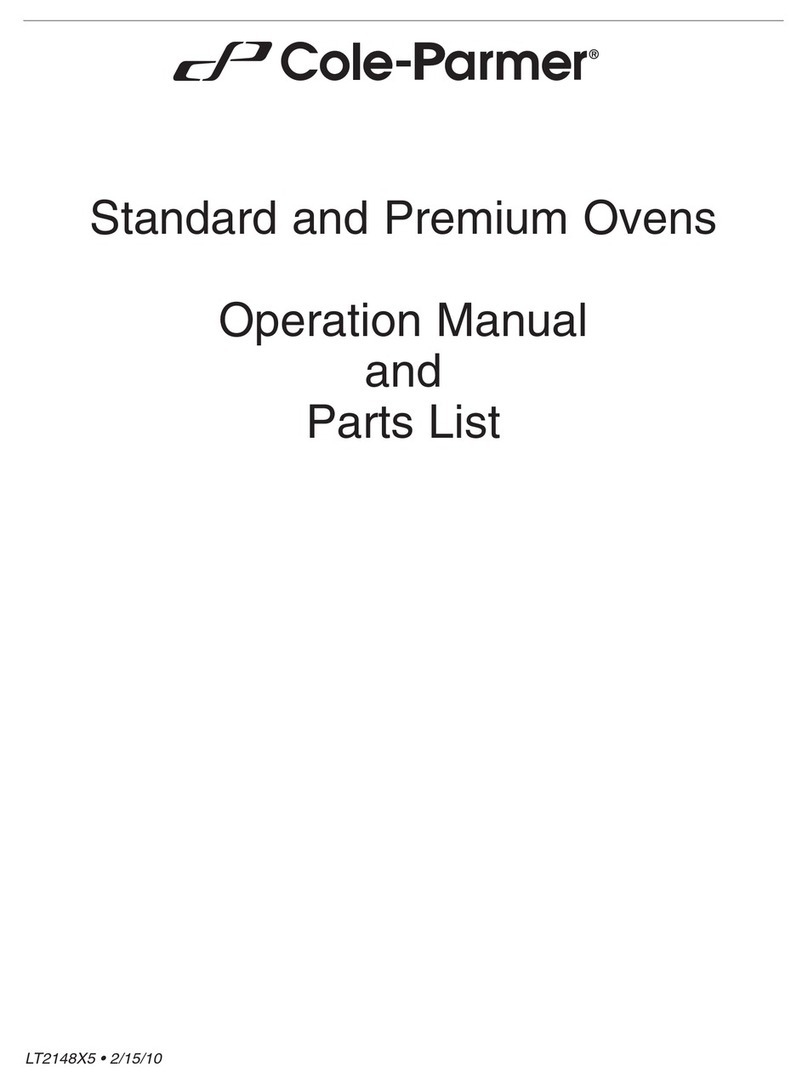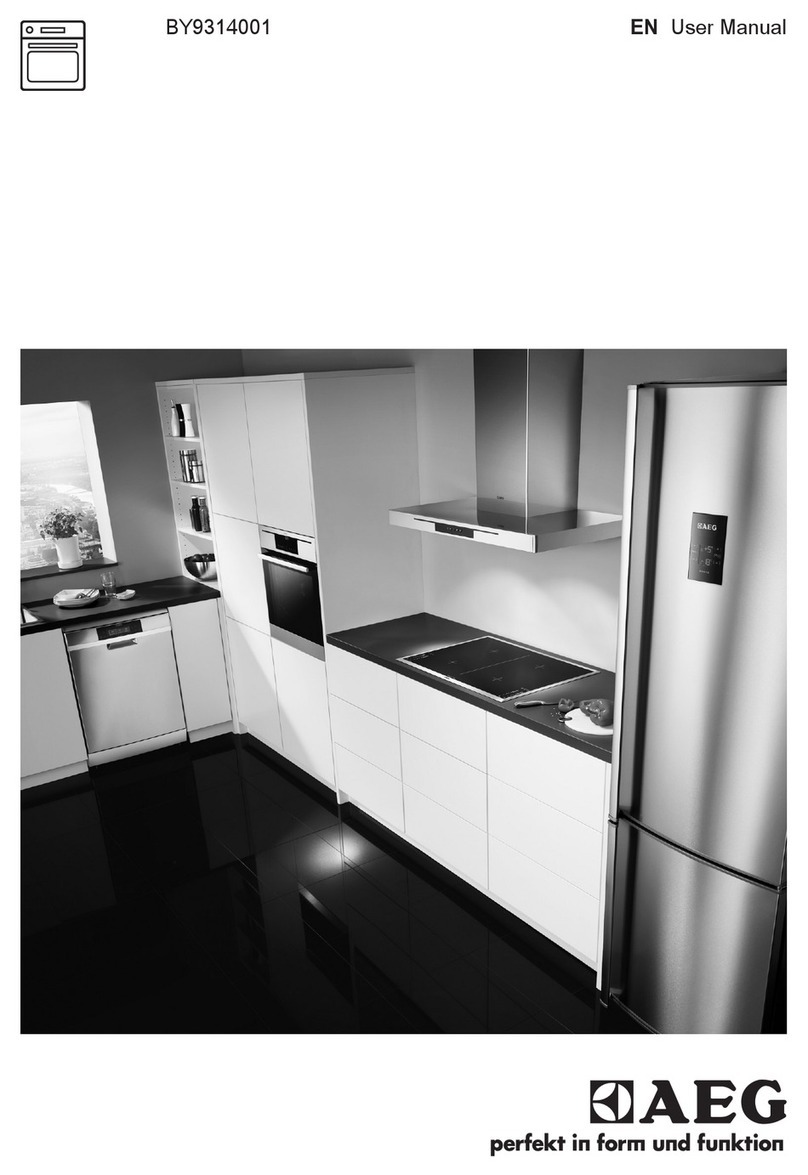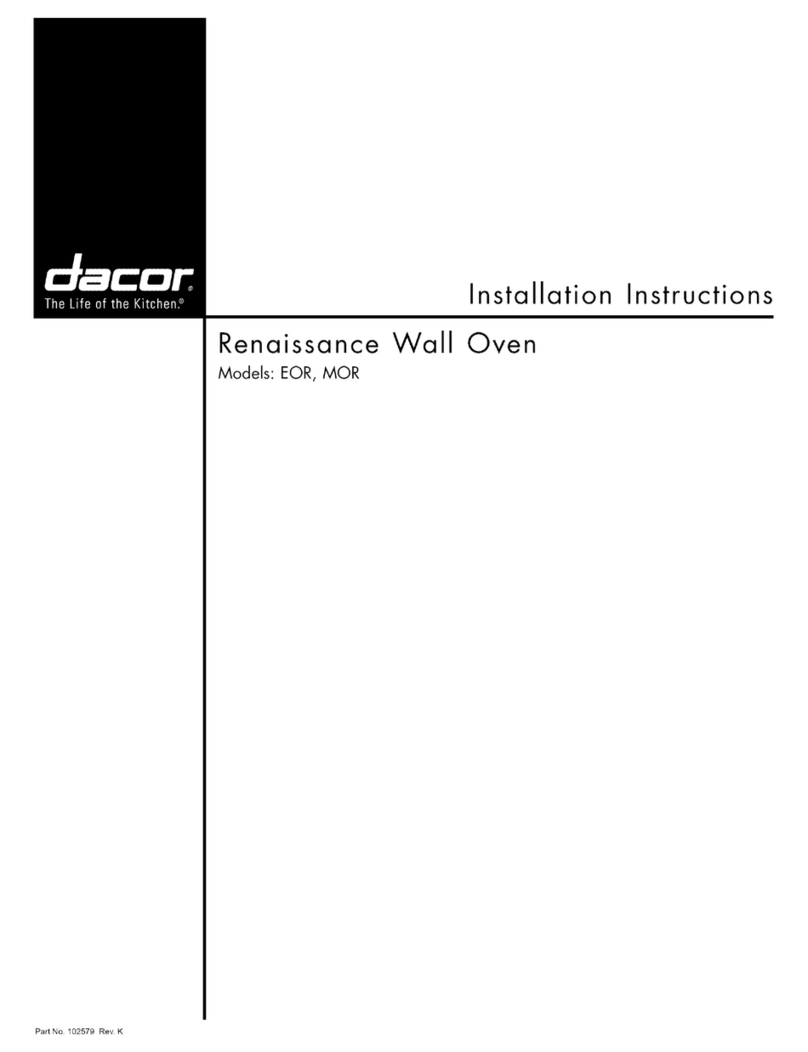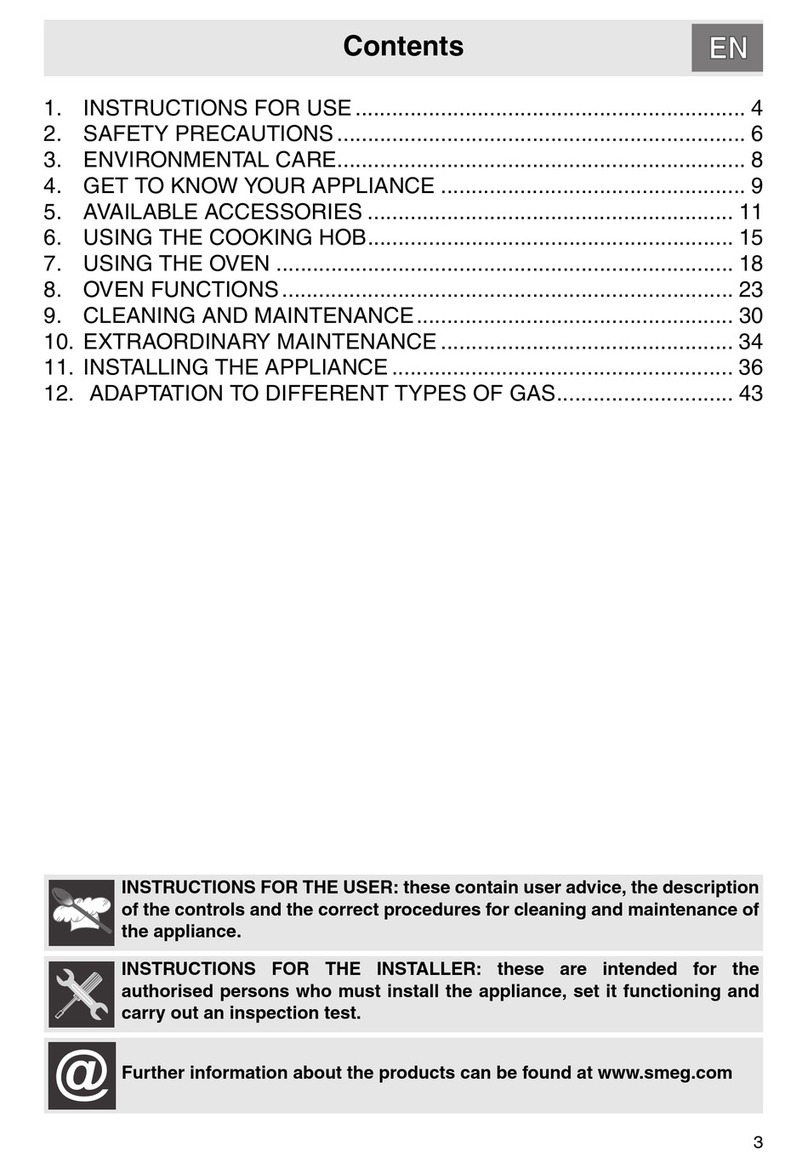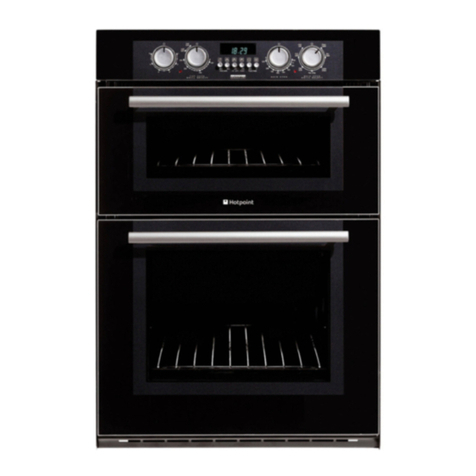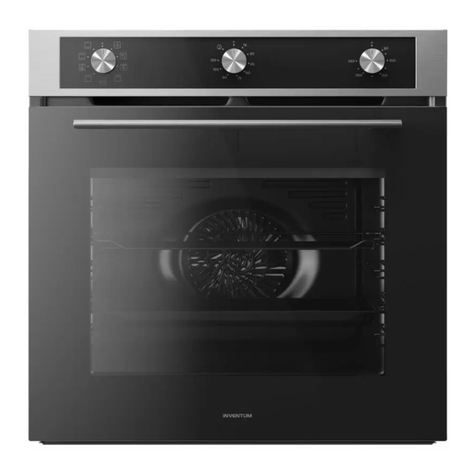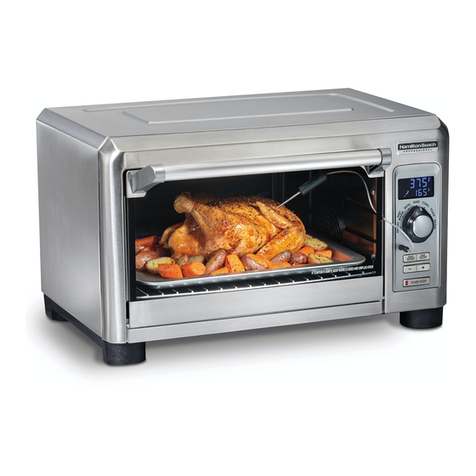shelolab SVAC1E User manual

Installation - Operation Manual
SVAC1E SVAC2E / SVAC1E-2 SVAC2E-2
ECONOMY VACUUM OVENS
110 – 120 Volts 220 – 240 Volts

2| Page
Pictured on cover left to right:
SVAC1E, SVAC2E
The SVAC1E and SVAC2E ovens require a 110 – 120-volt NEMA 5-15R power outlet.
The SVAC1E-2 and SVAC2E-2 require a CEE7 220 – 240-volt power outlet compatible
with CEE7/7 cords to plug in to.
Warning:This product contains chemicals, including triglycidyl isocyanurate, known to the State of
California to cause cancer as well as birth defects or other reproductive harm. For more information,
go to www.P65Warnings.ca.gov.
¡Advertencia!Este producto contiene sustancias químicas, incluido el triglicidil isocianurato, que el
estado de California sabe que causa cáncer, así como defectos de nacimiento u otros daños
`reproductivos. Para obtener más información, visite www.P65Warnings.ca.gov.
Avertissement!Ce produit peut vous exposer à des produits chimiques, dont l'isocyanurate de
triglycidyle, reconnu par l'État de Californie pour provoquer le cancer, des anomalies congénitales
ou d'autres problèmes de reproduction. Pour plus d'informations, visitez le site
www.P65Warnings.ca.gov.

3| Page
Economy Vacuum Ovens
110 – 120 Voltage — SVAC1E SVAC2E
220 – 240 Voltage — SVAC1E-2 SVAC2E-2
Part Number (Manual): 4861658
Revision: November 22, 2021
ISO CERTIFIED MANUFACTURER
SHEL LAB is a brand of Sheldon Manufacturing, INC, an ISO 9001
certified manufacturer.
These units are vacuum ovens intended for professional, industrial, or educational use where the
preparation or testing of materials is done at an ambient air pressure range of 22.14 – 31.3 inHg (75 –
106 kPa), and no flammable, volatile or combustible materials are being heated.
These models are compliant with the following standards:
CAN/CSA C22.2 No. 61010-1:2012
CAN/CSA C22.2 No. 61010-2-010/R:2009
UL 61010-1:2012
UL 61010A-2-010:2002
EN 61010-1:2010
EN 61010-2-010:2003

4| Page
TABLE OF CONTENTS
INTRODUCTION ........................................................................................................................................................ 5
Read this Manual....................................................................................................................................................................5
Safety Considerations and Requirements ......................................................................................................................5
Contacting Assistance ..........................................................................................................................................................6
Manufacturing Warranty ......................................................................................................................................................6
Engineering Improvements..................................................................................................................................................6
Vacuum Supply Required .................................................................................................................................................... 7
Gaskets .....................................................................................................................................................................................8
RECEIVING YOUR UNIT ........................................................................................................................................... 9
Inspect the Shipment.............................................................................................................................................................9
Orientation Images .............................................................................................................................................................. 10
Record the Data Plate Information.................................................................................................................................. 13
INSTALLATION .........................................................................................................................................................15
Installation Procedure Checklist ...................................................................................................................................... 15
Required Ambient Conditions........................................................................................................................................... 16
Required Clearances........................................................................................................................................................... 16
Power Source Requirements .............................................................................................................................................17
Lifting and Handling ............................................................................................................................................................ 18
Leveling................................................................................................................................................................................... 18
Install the Oven ..................................................................................................................................................................... 19
Deionized and Distilled Water.......................................................................................................................................... 19
Installation - Clean and Disinfect..................................................................................................................................... 19
Shelving Installation............................................................................................................................................................ 20
Connect to the Vacuum Supply ....................................................................................................................................... 21
GRAPHIC SYMBOLS ............................................................................................................................................... 23
CONTROL OVERVIEW ............................................................................................................................................ 25
OPERATION.............................................................................................................................................................. 27
Operating Precautions........................................................................................................................................................27
Theory of Operation ........................................................................................................................................................... 28
Put the Oven into Operation ............................................................................................................................................ 30
Evacuating the Oven Chamber....................................................................................................................................... 32
Select Approximate Oven Temperature....................................................................................................................... 33
Temperature Matching ...................................................................................................................................................... 34
Maximum Obtainable Vacuum........................................................................................................................................ 36
Pressure Units Conversion Chart.................................................................................................................................... 36
USER MAINTENANCE............................................................................................................................................. 37
Cleaning and Disinfecting..................................................................................................................................................37
Maintaining Atmospheric Integrity ................................................................................................................................. 38
Electrical Components....................................................................................................................................................... 38
Vacuum Pump Maintenance............................................................................................................................................ 38
Storage................................................................................................................................................................................... 38
UNIT SPECIFICATIONS .......................................................................................................................................... 39
Weight..................................................................................................................................................................................... 39
Dimensions............................................................................................................................................................................ 39
Capacity ................................................................................................................................................................................. 40
Shelf Capacity by Weight.................................................................................................................................................. 40
Vacuum .................................................................................................................................................................................. 40
Temperature .......................................................................................................................................................................... 41
Power....................................................................................................................................................................................... 41
PARTS LIST............................................................................................................................................................... 43
Replacement Gaskets........................................................................................................................................................ 44

5| Page
INTRODUCTION
Thank you for purchasing a SHEL LAB oven. We know you have many choices in today’s competitive
marketplace when it comes to constant temperature equipment. We appreciate you choosing ours. We
stand behind our products and will be here if you need us.
READ THIS MANUAL
Failure to follow the guidelines and instructions in this user manual may create a protection
impairment by disabling or interfering with the unit safety features. This can result in injury or death.
Before using the unit, read the manual in its entirety to understand how to install, operate, and
maintain the unit in a safe manner. Keep this manual available for use by all operators. Ensure all
operators are given appropriate training before the unit begins service.
SAFETY CONSIDERATIONS AND REQUIREMENTS
Follow basic safety precautions, including all national laws, regulations, and local ordinances in your
area regarding the use of this unit. If you have any questions about local requirements, please
contact the appropriate agencies.
SOPs: Because of the range of potential applications this unit can be used for, the operator or their
supervisors must draw up a site-specific standard operating procedure (SOP) covering each
application and associated safety guidelines. This SOP must be written and available to all operators
in a language they understand.
Intended Applications and Locations: SVAC economy ovens are engineered for constant temperature
drying, curing, and baking applications under vacuum in professional, industrial, and educational
environments. The ovens are not intended for use at hazardous or household locations.
Power: Your unit and its recommended accessories are designed and tested to meet strict safety
requirements.
•The unit is designed to connect to a power source using the specific power cord type
shipped with the unit.
•Always plug the unit power cord into a protective earth grounded electrical outlet
conforming to national and local electrical codes. If the unit is not grounded properly, parts
such as knobs and controls can conduct electricity and cause serious injury.
•Do not bend the power cord excessively, step on it, or place heavy objects on it.
•A damaged cord can be a shock or fire hazard. Never use a power cord if it is damaged or
altered in any way.
•Use only approved accessories. Do not modify system components. Any alterations or
modifications to your unit not explicitly authorized by the manufacturer can be dangerous
and will void your warranty.

6| Page
INTRODUCTION
CONTACTING ASSISTANCE
Phone hours for Customer Support are 6 am – 4:30 pm Pacific Coast Time (west coast of the United
States, UTC -8), Monday – Friday. Please have the following information ready when calling or
emailing Customer Support: the model number, serial number, and part number (see page 13).
support@sheldonmfg.com
1-800-322-4897 extension 4
(503) 640-3000 extension 4
FAX: (503) 640-1366
Sheldon Manufacturing, INC.
P.O. Box 627
Cornelius, OR 97113
USA
MANUFACTURING WARRANTY
For information on your warranty and online warranty registration please visit:
•sheldonmanufacturing.com/warranty
ENGINEERING IMPROVEMENTS
Sheldon Manufacturing continually improves all of its products. As a result, engineering changes and
improvements are made from time to time. Therefore, some changes, modifications, and
improvements may not be covered in this manual. If your unit’s operating characteristics or
appearance differs from those described in this manual, please contact your SHEL LAB dealer or
customer service representative for assistance.

7| Page
INTRODUCTION
VACUUM SUPPLY REQUIRED
The oven does not come with a vacuum pump. A pump must be separately purchased for
the oven.
Consult a vacuum pump specialist to determine the pump type best suited to your baking
application. The correct selection of a vacuum pump is critical for evacuating the chamber to
the level required for your vacuum baking applications in a timely manner. The nature of the
sample or product being heated should drive the selection of the pump, including the types
of chemicals outgassed during the baking process. Common pump types include Chemical
Duty PTFE Dry, Standard Duty Dry, Compact Direct-Drive, and specialty pumps for Corrosive
gases. The selection of an application-specific pump can improve the overall oven
performance and minimize pump maintenance costs.
Use of an oil trap plumbed on the vacuum line between the oven and the pump is strongly
recommended. The trap protects the pump from any oils outgassed during your baking
procedure. This extends the life of the pump. All maintenance and instructional information
should be obtained from the pump manufacturer if not shipped with the pump. Use of
clamps to secure vacuum tubing is also recommended.
Pumping Capacity
Ensure that the selected vacuum pump is rated to a minimum flow capacity of 5 cubic feet per
minute (cfm) greater than the chamber volume.
Model Chamber Capacity Minimum Pump Capacity Minimum Pump Capacity
SVAC1Es 0.56 CuFt 6 cfm 170 Liters per Minute
SVAC2Es 1.67 CuFt 7 cfm 198 Liters per Minute
Minimum Vacuum Draw
To seal completely, the oven chamber must be under a minimum vacuum draw of:
inHg mmHg
3.0 76
Building
Vacuum Supply
Or

8| Page
INTRODUCTION
GASKETS
Gaskets are non-warranty, high-wear consumable items subject to compression forces, heat, and
outgassed byproducts. Heavy usage rates may necessitate frequent replacements. The manufacturer
strongly recommends keeping a spare gasket on hand during operation.
Each oven comes with a replaceable silicone gasket installed on the chamber liner. This gasket seals
against the chamber door to maintain the vacuum integrity of the chamber. The gasket must be
replaced periodically and is rated to 230°C. It is vulnerable to acids and solvents. The manufacturer
also offers for sale Viton®, fluorosilicone, and Buna gaskets. See page 44 for information on gasket
type suitability for baking applications.

9| Page
RECEIVING YOUR UNIT
INSPECT THE SHIPMENT
•When a unit leaves the factory, safe delivery becomes the responsibility of the carrier.
•Damage sustained during transit is not covered by the manufacturing defect warranty.
•Save the shipping carton until you are certain that the unit and its accessories function
properly.
When you receive your unit, inspect it for concealed loss or damage to its interior and exterior. If you
find any damage to the unit, follow the carrier’s procedure for claiming damage or loss.
1. Carefully inspect the shipping carton for damage.
2. Report any damage to the carrier service that delivered the unit.
3. If the carton is not damaged, open the carton and remove the contents.
4. The unit should come with an Installation and Operation Manual.
5. Verify that the correct number of accessories has been included.
6. Carefully check all packaging for loose accessories before discarding.
Included Accessories:
e
SVAC1Es
2 Shelves
SVAC2Es
2 Shelves

10 | Page
RECEIVING YOUR UNIT
ORIENTATION IMAGES
Door Latch
Shelves
Chamber Door
Chamber Gasket Seal
Control Panel
Oven Chamber
SVAC1Es

11 | Page
RECEIVING YOUR UNIT
Door Latch
Shelves
Chamber Door
Chamber Gasket Seal
Oven Chamber
SVAC2Es
Control Panel

12 | Page
RECEIVING YOUR UNIT
Vacuum Port
3/8 inch (9.52 mm)
Chamber Vent Port
¼ inch (6.35 mm)
Power Cord Inlet
Fuse Holders
(One holder only in 110-120
Voltage units)
Figure
1: Unit Back

13 | Page
RECEIVING YOUR UNIT
RECORD THE DATA PLATE INFORMATION
The data plate contains the unit model number, part number, and serial number. Tech Support will
need this information during any support call. Record it below for future reference.
•The data plate is located on the back of the oven above the power inlet.
Model Number
Serial Number
Part Number

14 | Page
RECEIVING YOUR UNIT

15 | Page
INSTALLATION
INSTALLATION PROCEDURE CHECKLIST
Carry out the procedures and steps listed below to install the oven in a new workspace location and
prepare it for use. All procedures are found in the Installation section of this manual.
Pre-Installation
Verify a vacuum supply source suitable for your application is available and
can be connected to the oven.
•See page 21 for the oven gas and vacuum port locations.
Check that the required ambient conditions for the unit are met, page 16.
Check that the spacing clearance requirements are met, page 16.
•Unit dimensions may be found on page 39.
Check that a suitable electrical outlet and power supply is present, page 17.
Installing the oven in a suitable workspace location
Review the lifting and handling instructions, page 18.
Install the oven in its workspace location, page 19.
Make sure the oven is level, page 18.
Set up the oven for use
Clean the oven shelving. Clean the chamber if needed, page 19.
Install the shelving in the oven chamber, page 20.
Connect the oven to its vacuum supply source, page 21.
Optional: Connect the oven to an inert backfill gas. See page 21.

16 | Page
INSTALLATION
REQUIRED AMBIENT CONDITIONS
When selecting a location to install the unit, consider all environmental conditions that can adversely
impact its temperature performance. These include:
•Proximity to other ovens, autoclaves, and any device that produces significant radiant heat
•Heating and cooling vents or other sources of fast-moving air currents
•High-traffic areas
•Direct sunlight
This oven is intended for use indoors, at room temperatures between 15°C and 40°C (59°F and 104°F),
at no greater than 80% Relative Humidity (at 25°C / 77°F). Operating these units outside of these
conditions may adversely affect temperature stability and effective operating range.
REQUIRED CLEARANCES
These clearances are required to provide airflows for ventilation and cooling.
12 inches (305 mm) of clearance is required on the sides and back.
12 inches (305 mm) of headspace clearance between the top of the unit and any overhead
partitions.
Do not place objects on top of the oven.
12” (305 mm)
Door Swing
12” (305 mm)
12” (305 mm)
12” (305 mm)
12” (305 mm)
SVAC1Es: 14” (356 mm)
SVAC2Es: 17” (432 mm)

17 | Page
INSTALLATION
POWER SOURCE REQUIREMENTS
When selecting a location for the unit, verify each of the following requirements is satisfied.
Power Source: The wall power outlet must meet the power requirements listed on the unit data
plate.
Model AC Voltage Amperage Frequency
SVAC1E
110 – 120
5.0
50/60 Hz
SVAC2E
110 – 120
10.0
50/60 Hz
SVAC1E-2
220 – 240
2.5
50/60 Hz
SVAC2E-2 220 – 240 5.5 50/60 Hz
•Wall power sources must be protective earth grounded and single phase.
•Wall power sources must conform to all national and local electrical codes.
•Supplied voltage must not vary more than 10% from the data plate rating. Damage to
the unit may result if the supplied voltage varies more than 10%.
•The recommended wall circuit breakers for 110 – 120 VAC units are 15 amps.
•The recommended wall circuit breakers for 220 – 240 VAC units are 16 amps.
•Use a separate circuit to prevent loss of product due to overloading or circuit failure. The
circuit must match or exceed the amperage requirement listed on the unit data plate.
Power Cord:The unit must be positioned so that all end-users can quickly unplug the oven in the
event of an emergency.
•SVAC1E and SVAC2E units come provided with a 125-volt, 15 amp, 8ft 2 in (2.5m) NEMA 5-
15P integrated power cord.
•SVAC1E-2 and SVAC2E-2 units come provided with a 250-volt, 16 amp 8ft 2 in (2.5m) CEE
16P integrated power cord.
•Always use this cord or an identical replacement.
Fuses: SVAC1Es and SVAC2Es each ship with a fuse installed in a fuse holder next to the power cord
inlet. SVAC1E-2s and SVAC2E-2s each ship with 2 fuses installed in holders next to the cord inlet.
•Fuses must be installed and intact for the unit to operate.
•Always find and fix the cause of a blown fuse prior to putting the unit back into operation.
•Fuse types:
oSVAC1Es: 250V, T6.3, 5X20mm
oSVAC2Es: 250 V, T10A 5X20mm
Standard
NEMA 5-15R
wall socket
CEE7 Sockets
compatible with
CEE7/7 Plugs

18 | Page
INSTALLATION
LIFTING AND HANDLING
The oven is heavy. Use appropriate lifting devices that are sufficiently rated for these loads. Follow
these guidelines when lifting the oven:
•Lift the oven only from its bottom surface.
•Doors, handles, and knobs are not adequate for lifting or stabilization.
•Restrain the oven completely while lifting or transporting so it cannot tip.
•Remove all moving parts, such as shelves and trays, and lock doors in the closed position
during transfers to prevent shifting and damage.
LEVELING
The oven is equipped with rubber feet to raise it off the counter and prevent sliding. Ensure that the
oven is on a flat and level surface, prior to placing the unit in operation.

19 | Page
INSTALLATION
INSTALL THE OVEN
Place the unit in a workspace location that meets the criteria discussed in the previous entries of the
Installation section.
DEIONIZED AND DISTILLED WATER
Do not use deionized water to clean the unit. The use of deionized water may corrode metal
surfaces and voids the warranty. The manufacturer recommends the use of distilled water in the
resistance range of 50K Ohm/cm to 1M Ohm/cm, or a conductivity range of 20.0 uS/cm to 1.0 uS/cm,
for cleaning.
INSTALLATION -CLEAN AND DISINFECT
Cleaning and disinfecting the unit chamber and shelving components now reduces the risk of
contamination. The chamber and shelving were cleaned and disinfected at the factory; however, the
unit may have been exposed to contaminants during shipping.
•Remove all protective wrappings from shelving components prior to cleaning.
•See the Cleaning and Disinfecting entry on page 37 for information on how to clean and
disinfect without damaging the unit or its components.

20 | Page
INSTALLATION
SHELVING INSTALLATION
SVAC economy ovens are provided with 2 identical stacking shelves. Install both shelves.
Never place samples or product on the oven chamber floor. The floor runs hotter than the shelf
temperatures. All heating specifications for the oven are for shelving temperatures.
1. Carefully slide one shelf into position on the chamber floor.
2. Place the second shelf on top of it.
This manual suits for next models
3
Table of contents
Other shelolab Oven manuals
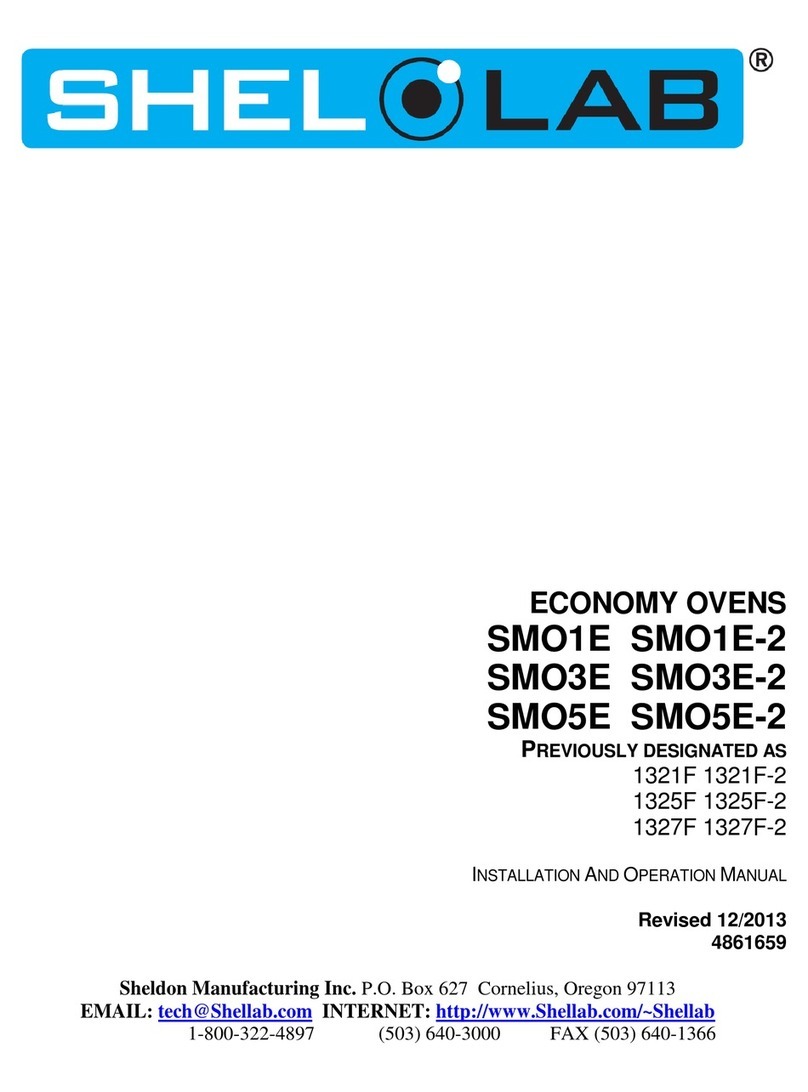
shelolab
shelolab SMO1E User manual
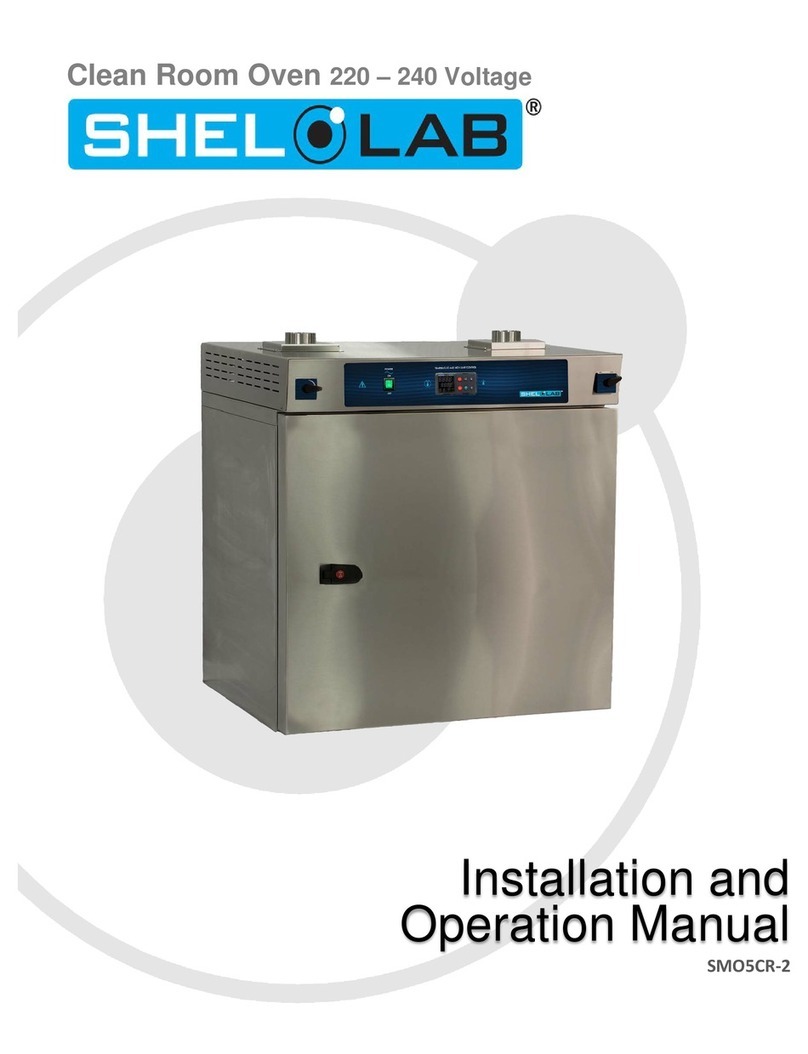
shelolab
shelolab SMO5CR-2 User manual
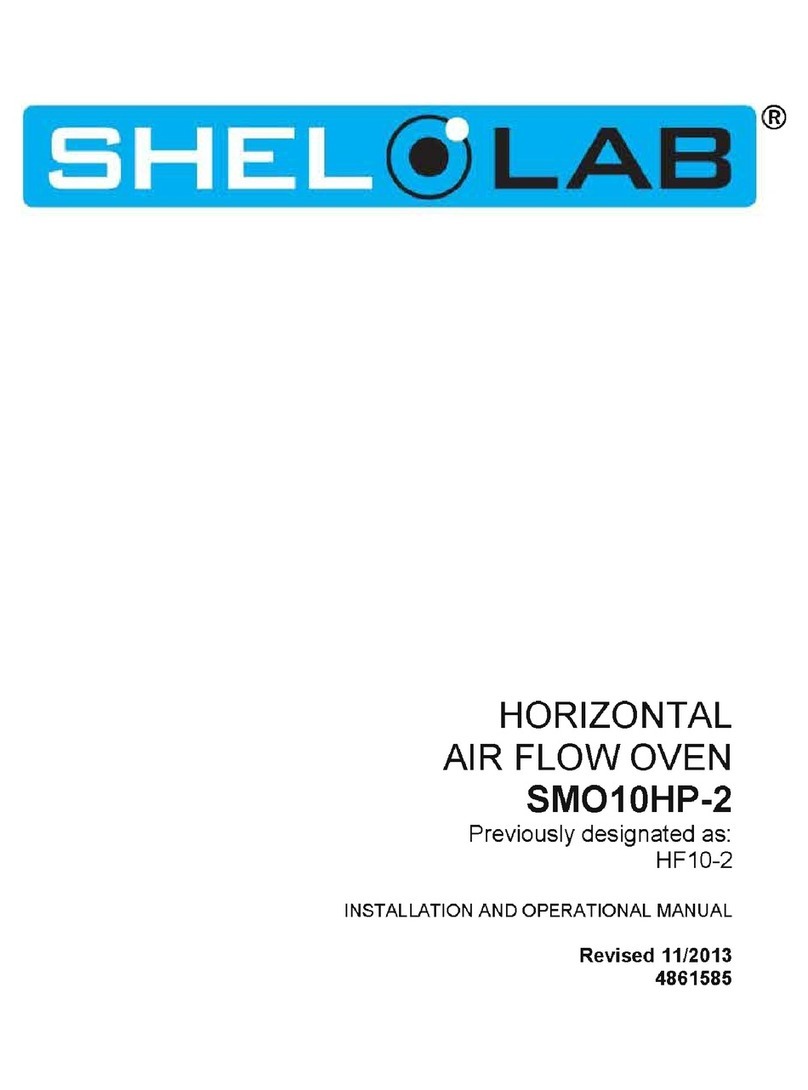
shelolab
shelolab SMO10HP-2 Quick start guide
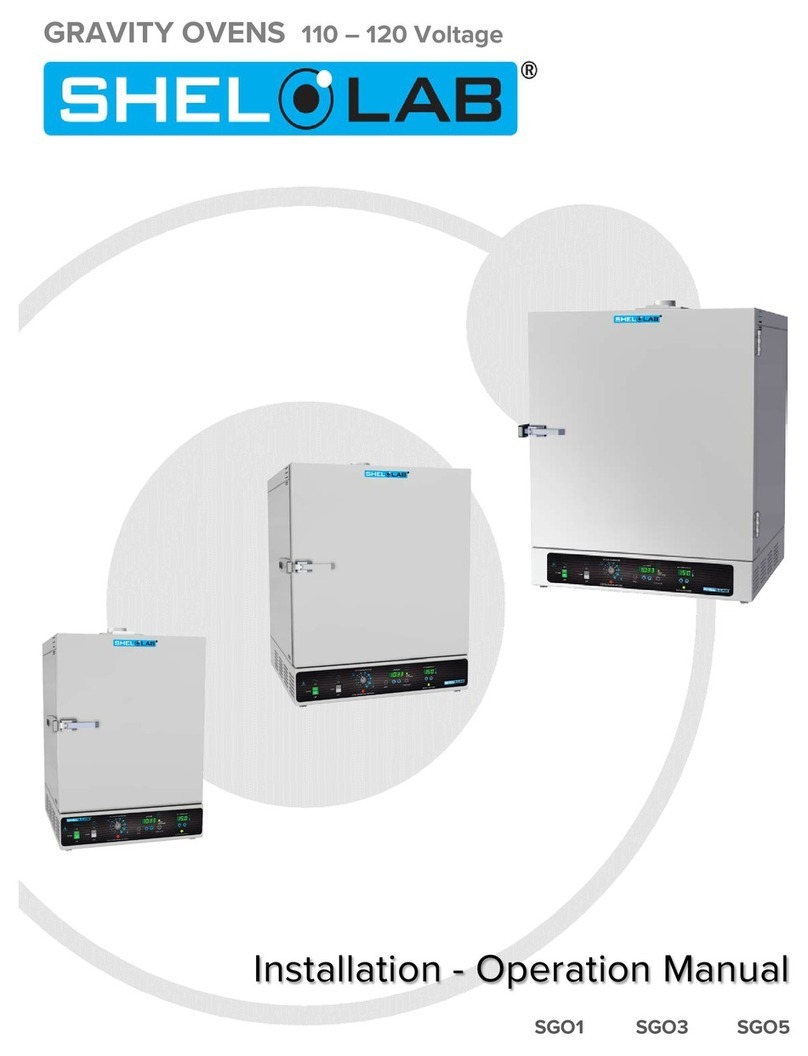
shelolab
shelolab SG02 User manual
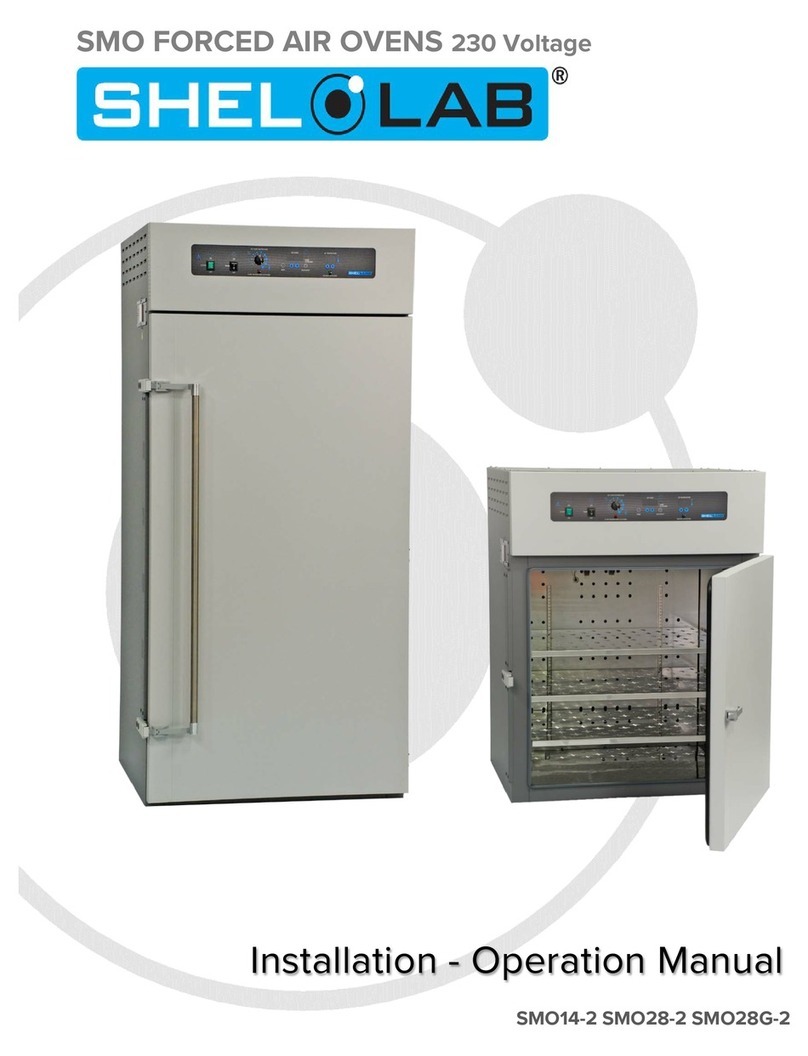
shelolab
shelolab SMO14-2 User manual
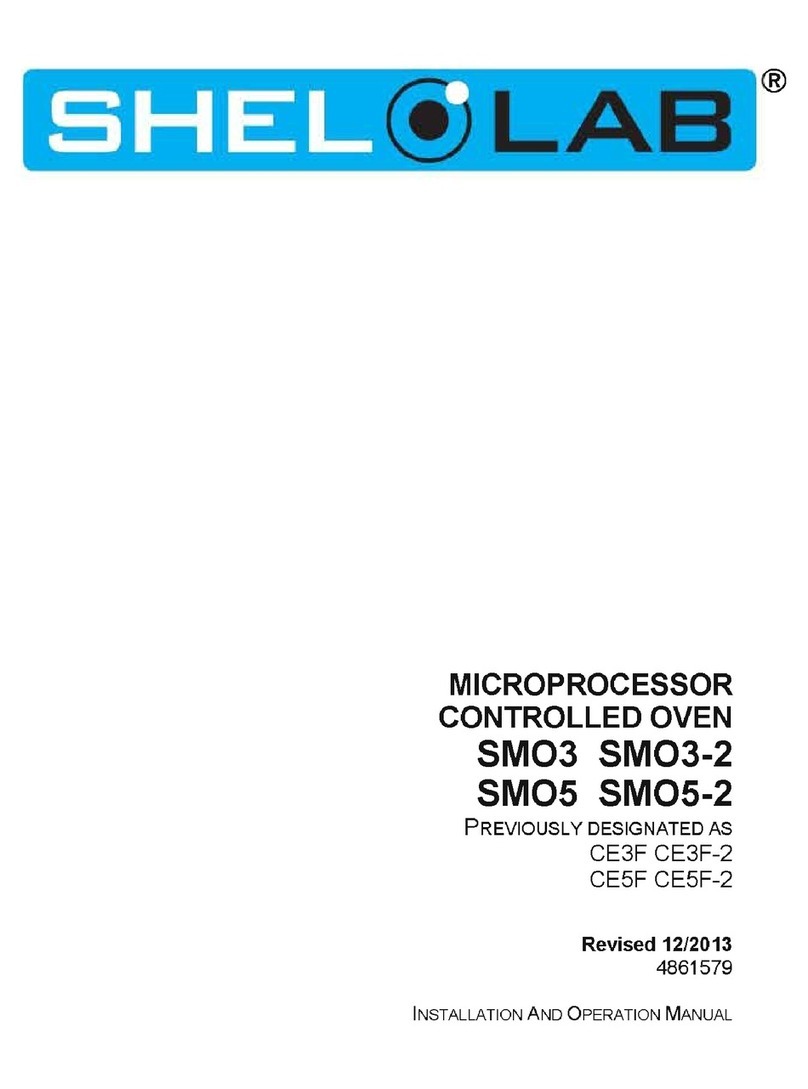
shelolab
shelolab SMO3 User manual
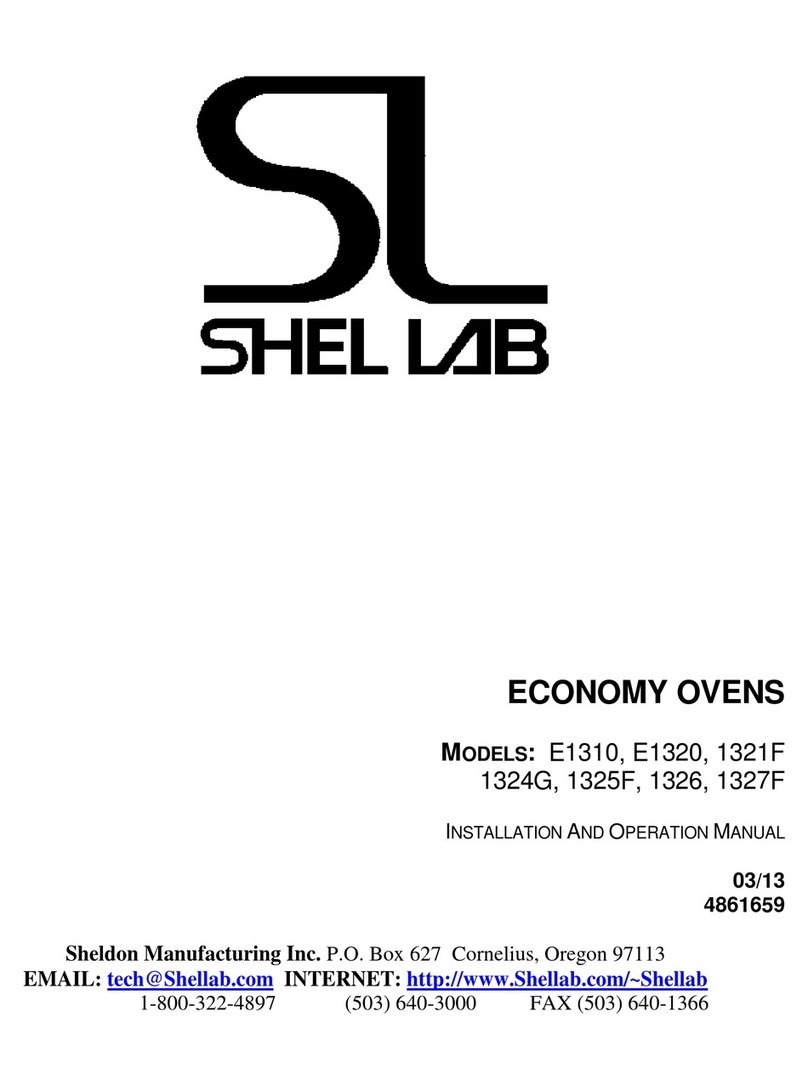
shelolab
shelolab E1310 User manual
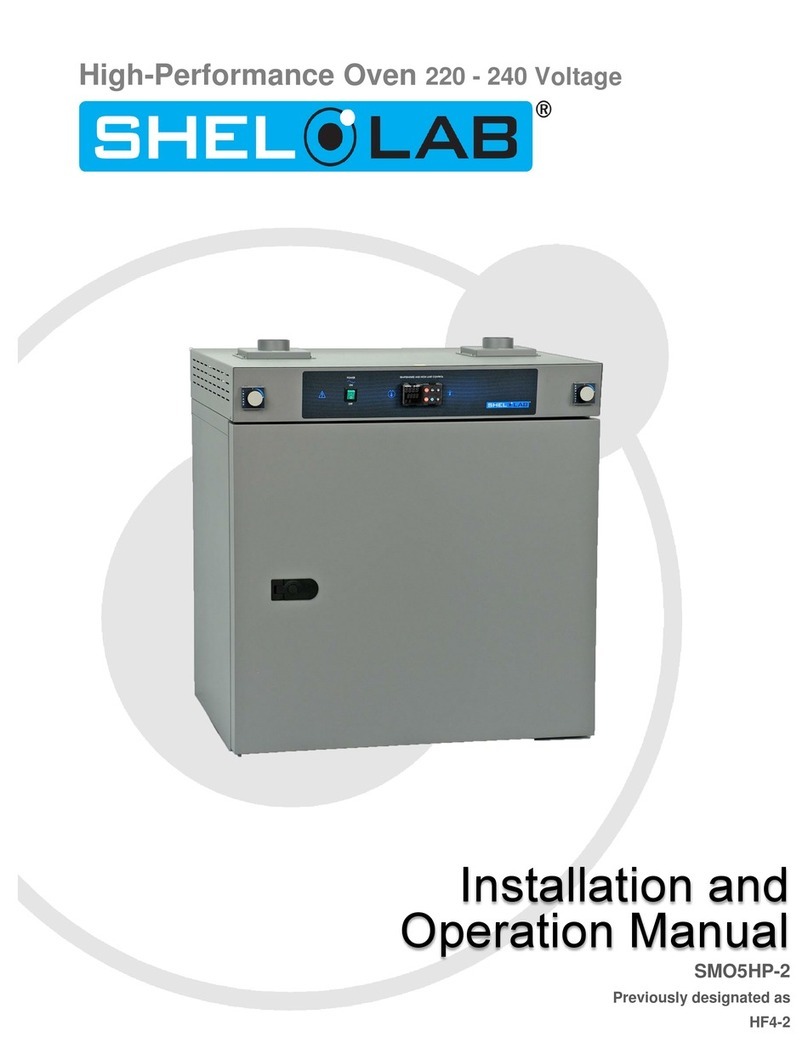
shelolab
shelolab SMO5HP-2 User manual

shelolab
shelolab SMO5HP-2 User manual
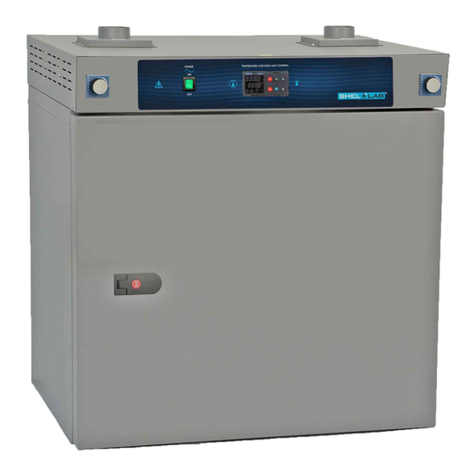
shelolab
shelolab SMO5HP-2 User manual
Popular Oven manuals by other brands

Dacor
Dacor EORD227S installation instructions
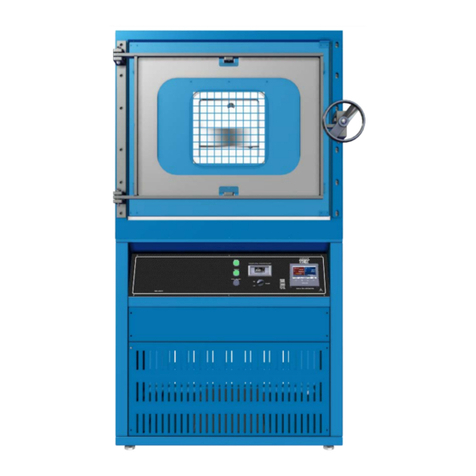
Cascade TEK
Cascade TEK SVO-10-VC Installation and operation manual

DCS
DCS WOSU-30 installation instructions
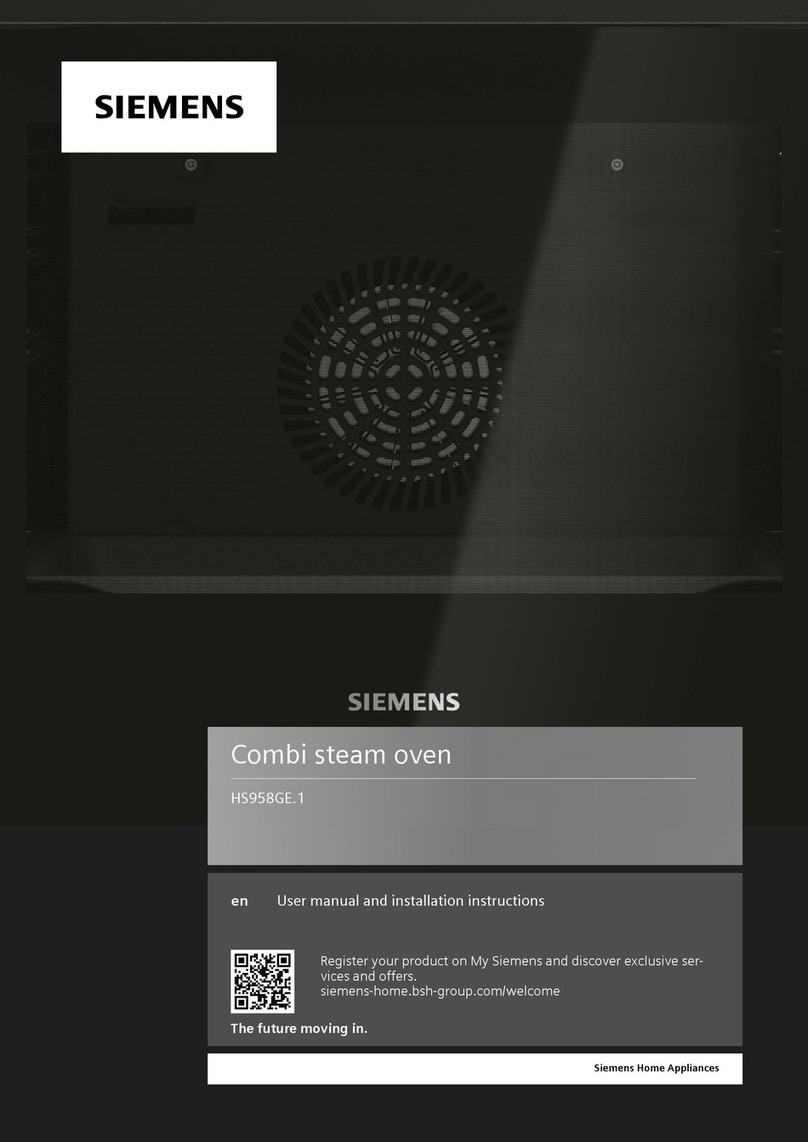
Siemens
Siemens HS958GE.1 User manual and installation instructions

KitchenAid
KitchenAid KEMI300W Use and care guide
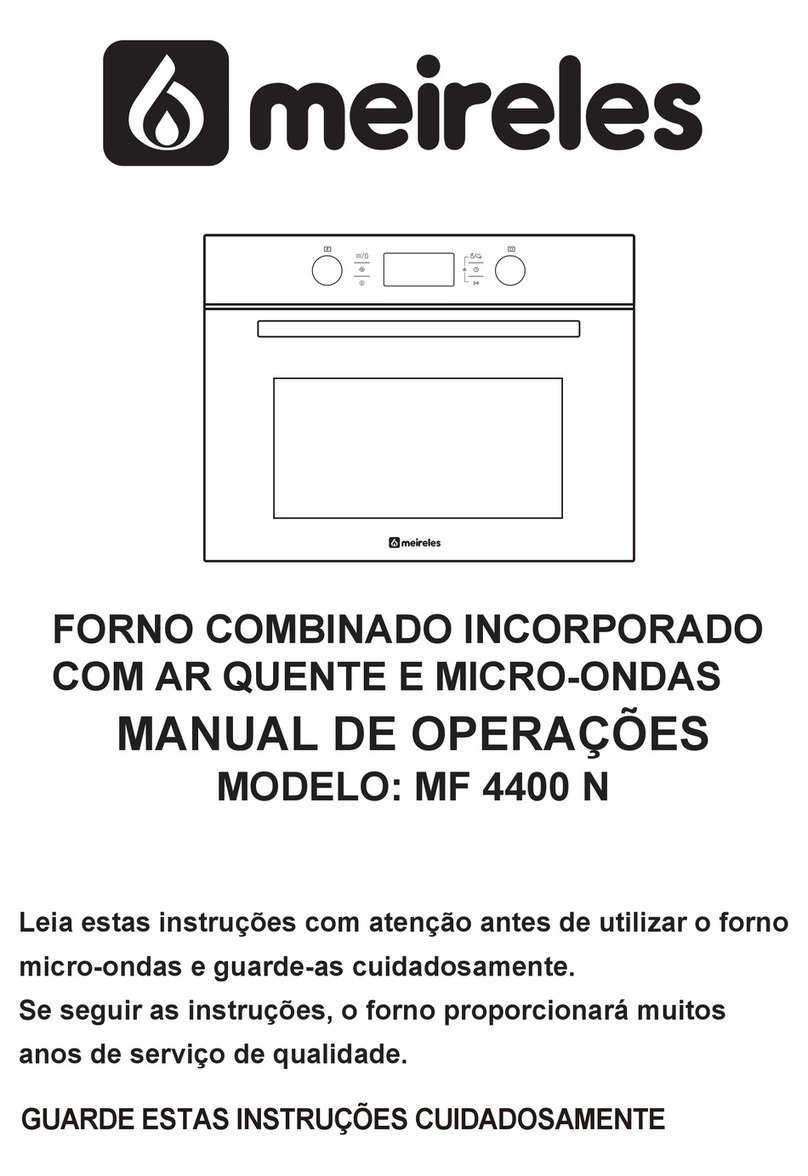
Meireles
Meireles MF 4400 N Operation manual
